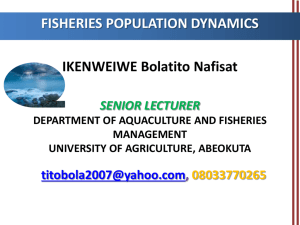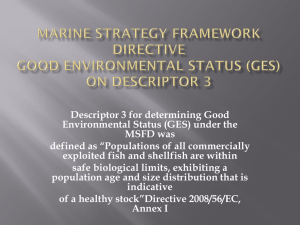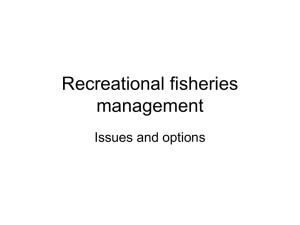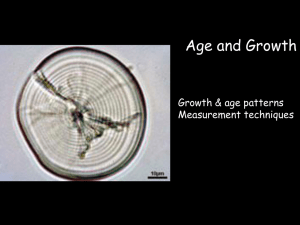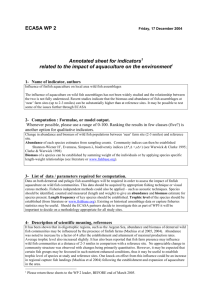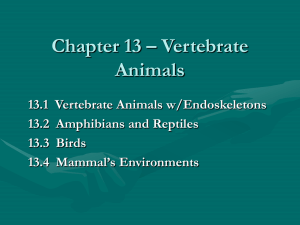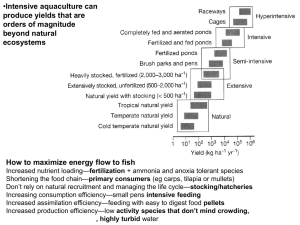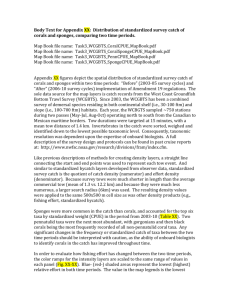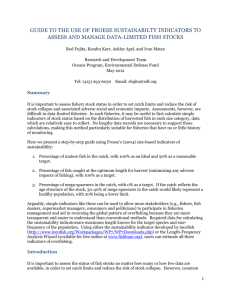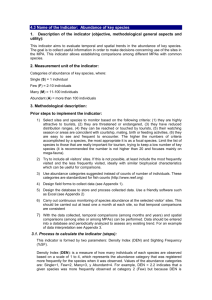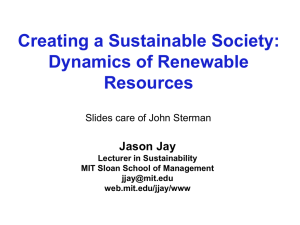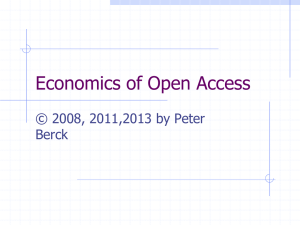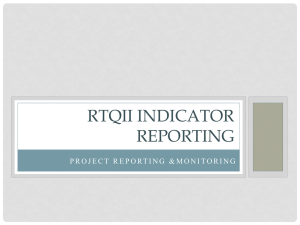View Poster - Deepak George Pazhayamadom
advertisement
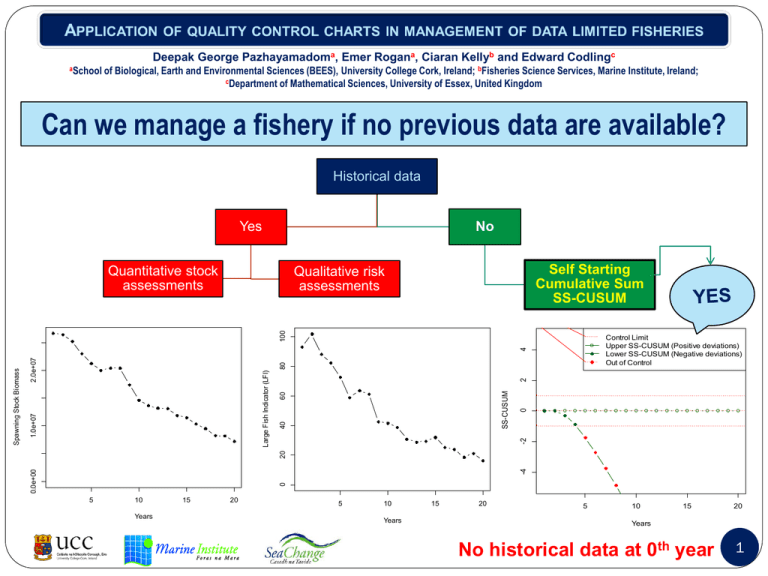
Deepak George Pazhayamadoma, Emer Rogana, Ciaran Kellyb and Edward Codlingc aSchool of Biological, Earth and Environmental Sciences (BEES), University College Cork, Ireland; bFisheries Science Services, Marine Institute, Ireland; cDepartment of Mathematical Sciences, University of Essex, United Kingdom Can we manage a fishery if no previous data are available? Historical data No Yes Quantitative stock assessments Self Starting Cumulative Sum SS-CUSUM 100 Qualitative risk assessments 2 -4 20 -2 0 SS-CUSUM 60 40 Large Fish Indicator (LFI) 80 2.0e+07 1.0e+07 0 0.0e+00 Spawning Stock Biomass 4 Control Limit Upper SS-CUSUM (Positive deviations) Lower SS-CUSUM (Negative deviations) Out of Control 5 10 Years 15 20 5 10 Years 15 20 5 10 15 20 Years No historical data at 0th year 1 Self starting CUSUM (Hawkins, 1998) SS-CUSUM • SS-CUSUM is an indicator monitoring tool. Running mean • SS-CUSUM do not need a reference point. (Calibrated using real time data) • SS-CUSUM calculate the cumulative deviations of indicator from running mean Three parameters Parameters 1. Allowance (k) • Allowance (k) accommodate the inherent variability in observations 2. Control limit (h) 3. Winsorizing constant (w) • Control limit (h) produce signal if the indicator is in an out-of-control (OC) situation • Winsorizing constant (w) make self starting CUSUM robust to outliers EVALUATION OF SS-CUSUM USING A STOCHASTIC SIMULATION TEST Indicator observations corresponding to outof-control situations are omitted while calibrating the running mean • A stable fish stock was overfished and indicators were monitored using SS-CUSUM 97 • Signals obtained from SS-CUSUM were used to calculate sensitivity and specificity •Receiver Operator Characteristic (ROC) curves 95 94 93 MEASURES USED 92 PERFORMANCE LFI running mean • Specificity is the probability of getting a true signal when there was no overfishing 96 • Sensitivity is the probability of getting a true signal when overfishing was applied 5 10 15 20 Years 2 RESULTS (ROC CURVES) • SS-CUSUM was successful in detecting the fishing impact. • An indicator is best when the apex of ROC curve is closer to upper left corner. 0.6 Sensitivity 0.4 0.8 0.6 0.4 Sensitivity BEST GOOD 0.8 1.0 1.0 •The method performed best with Large Fish Indicators (LF catch numbers, LF catch weight and LF CPUE). WORST CONCLUSION 0.0 0.2 0.4 0.6 0.8 1.0 0.2 Recruitment Landings CPUE Large Fish CPUE Young Fish CPUE 0.0 0.0 0.2 Large Fish Catch Numbers Large Fish Catch Weight Mean Age Mean Length Mean Weight 0.0 0.2 1-Specificity 0.4 0.6 0.8 1.0 1-Specificity All stock indicators in the study were useful in detecting fishing impact and hence SS-CUSUM can be potentially used for monitoring data poor fisheries REFERENCE: Hawkins, D.,Olwell, D., 1998. Cumulative sum charts and charting for quality improvement: Springer Verlag, pp:162-168. 3

